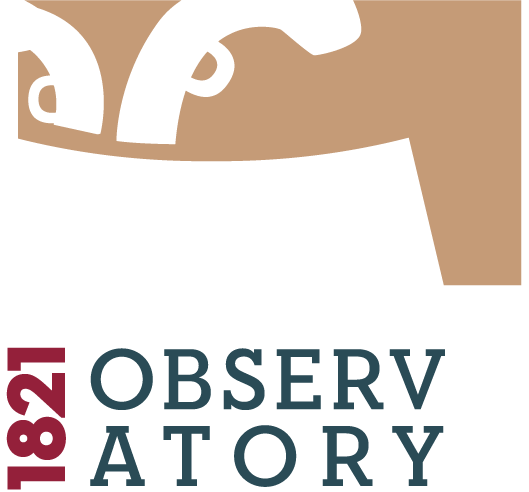The shifting sands of philhellenism and the first English portraits of Byron: From “preposterous liberalism” to the “pretext” of freedom
Item
Title
The shifting sands of philhellenism and the first English portraits of Byron: From “preposterous liberalism” to the “pretext” of freedom
List Of Authors
Creator
Spatial Coverage
Subject - keywords
Date
4 February 2021
Abstract
"The first, and now iconic, portraits of Lord Byron – “Portrait of a Nobleman in the Dress of an Albanian” (1814) and “Portrait of a Nobleman” (1814) and their many copies – remain largely under-researched. These portraits were painted by the Royal Academy painter Thomas Phillips, whose important yet unusual work in Romantic portraiture of men of science, medical men and celebrity writers and poets is also largely overlooked.
The talk aims to place Byron’s portraits in their immediate historical context, highlighting and enriching the disparate set of competing motives, expectations and practices that defined the history of European philhellenism and, in particular, the case of Byron. In this spirit, this talk studies the specific conditions of the portraits’ production, public exhibition and critical reception, their visual choices and perpetual reinterpretation by engaged viewers. The following themes encapsulate some of the significant forces present in these portraits that proved decisive for the spread of the attraction of Greece among the contemporary elite: commercial advantages, consumption and the quest for celebrity status in the cultural market of the time; sensationalism, disguise, notoriousness and the pursuit of perpetual sensory stimulation in the construction of new models of dynamic virility and artistic identity; exotic fantasies and orientalist hybridisations.
In a happy coincidence, ten years after the appearance of Byron’s portraits, there also appeared an extraordinary yet largely unknown literary portrait of the poet written by the most brilliant essayist and critic of the first half of the nineteenth century, William Hazlitt. In addition to being Byron’s associate, this well-known member of the Cockney School of literature was one of the first critics to review Phillips’ portraits of Byron exhibited at the Royal Academy exhibition of 1814. Hazlitt’s bottom-up literary portrait unpicks in a most biting way all the social, political and aesthetic forces that marked Byron’s “preposterous liberalism” and related version of philhellenism. Ultimately, Hazlitt’s essay spots all the conflicting oscillations characteristic of Byron’s philhellenic model; passages across aristocratic forms of distinction and the love of people, class privilege and social equality, politeness and wildness, haughtiness and self-contempt, ennui and freedom that throw a new critical-historical light on Phillips’s portraits and the history of philhellenism, more broadly."
From the book of abstracts of the conference, as it was published on Intiative's 1821-2021 website.
[Original abstract edited for clarity]
The talk aims to place Byron’s portraits in their immediate historical context, highlighting and enriching the disparate set of competing motives, expectations and practices that defined the history of European philhellenism and, in particular, the case of Byron. In this spirit, this talk studies the specific conditions of the portraits’ production, public exhibition and critical reception, their visual choices and perpetual reinterpretation by engaged viewers. The following themes encapsulate some of the significant forces present in these portraits that proved decisive for the spread of the attraction of Greece among the contemporary elite: commercial advantages, consumption and the quest for celebrity status in the cultural market of the time; sensationalism, disguise, notoriousness and the pursuit of perpetual sensory stimulation in the construction of new models of dynamic virility and artistic identity; exotic fantasies and orientalist hybridisations.
In a happy coincidence, ten years after the appearance of Byron’s portraits, there also appeared an extraordinary yet largely unknown literary portrait of the poet written by the most brilliant essayist and critic of the first half of the nineteenth century, William Hazlitt. In addition to being Byron’s associate, this well-known member of the Cockney School of literature was one of the first critics to review Phillips’ portraits of Byron exhibited at the Royal Academy exhibition of 1814. Hazlitt’s bottom-up literary portrait unpicks in a most biting way all the social, political and aesthetic forces that marked Byron’s “preposterous liberalism” and related version of philhellenism. Ultimately, Hazlitt’s essay spots all the conflicting oscillations characteristic of Byron’s philhellenic model; passages across aristocratic forms of distinction and the love of people, class privilege and social equality, politeness and wildness, haughtiness and self-contempt, ennui and freedom that throw a new critical-historical light on Phillips’s portraits and the history of philhellenism, more broadly."
From the book of abstracts of the conference, as it was published on Intiative's 1821-2021 website.
[Original abstract edited for clarity]
Type specialization
Format
Data sets
Language
Bibliographic Citation
https://www.blod.gr/lectures/synedria-i-i-elliniki-epanastasi-me-eikona-kai-synaisthima/
https://www.protovoulia21.gr/draseis/ethnika-kinimata-kai-filellinismos/
Number Of Pages - Duration
00:20:00
Rights
BY-NC-SA Attribution-NonCommercial-ShareAlike
Position: 2868 (81 views)
